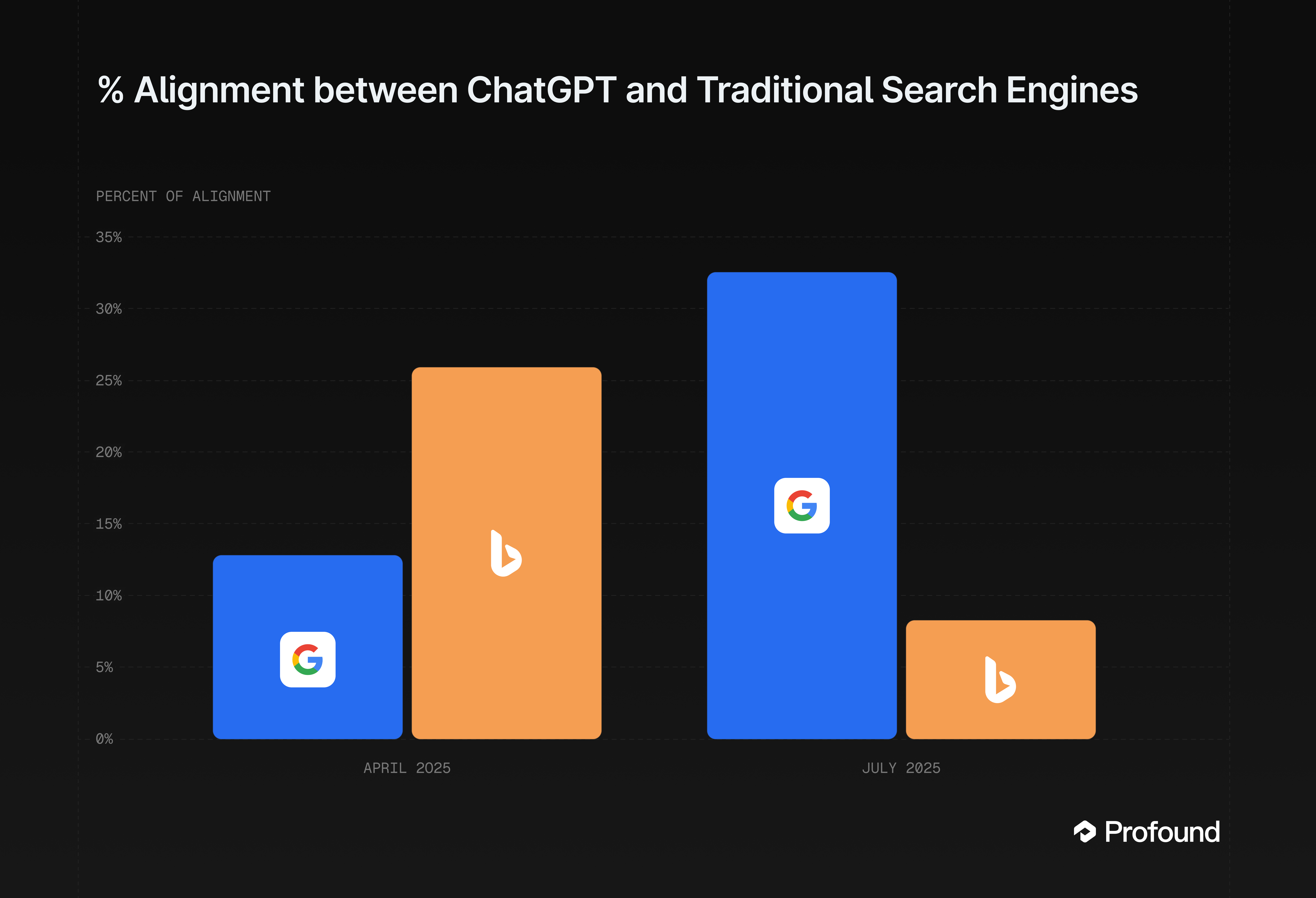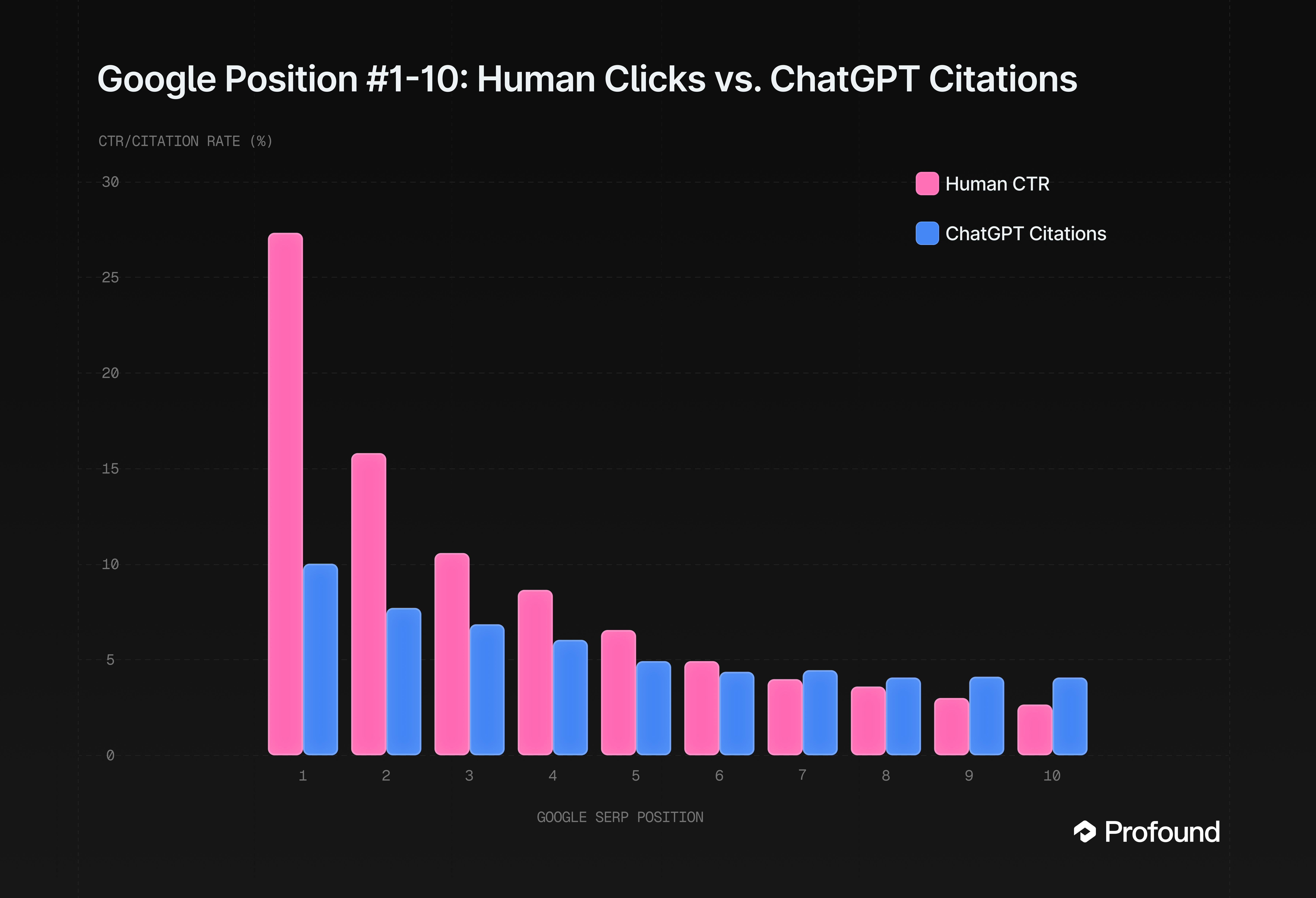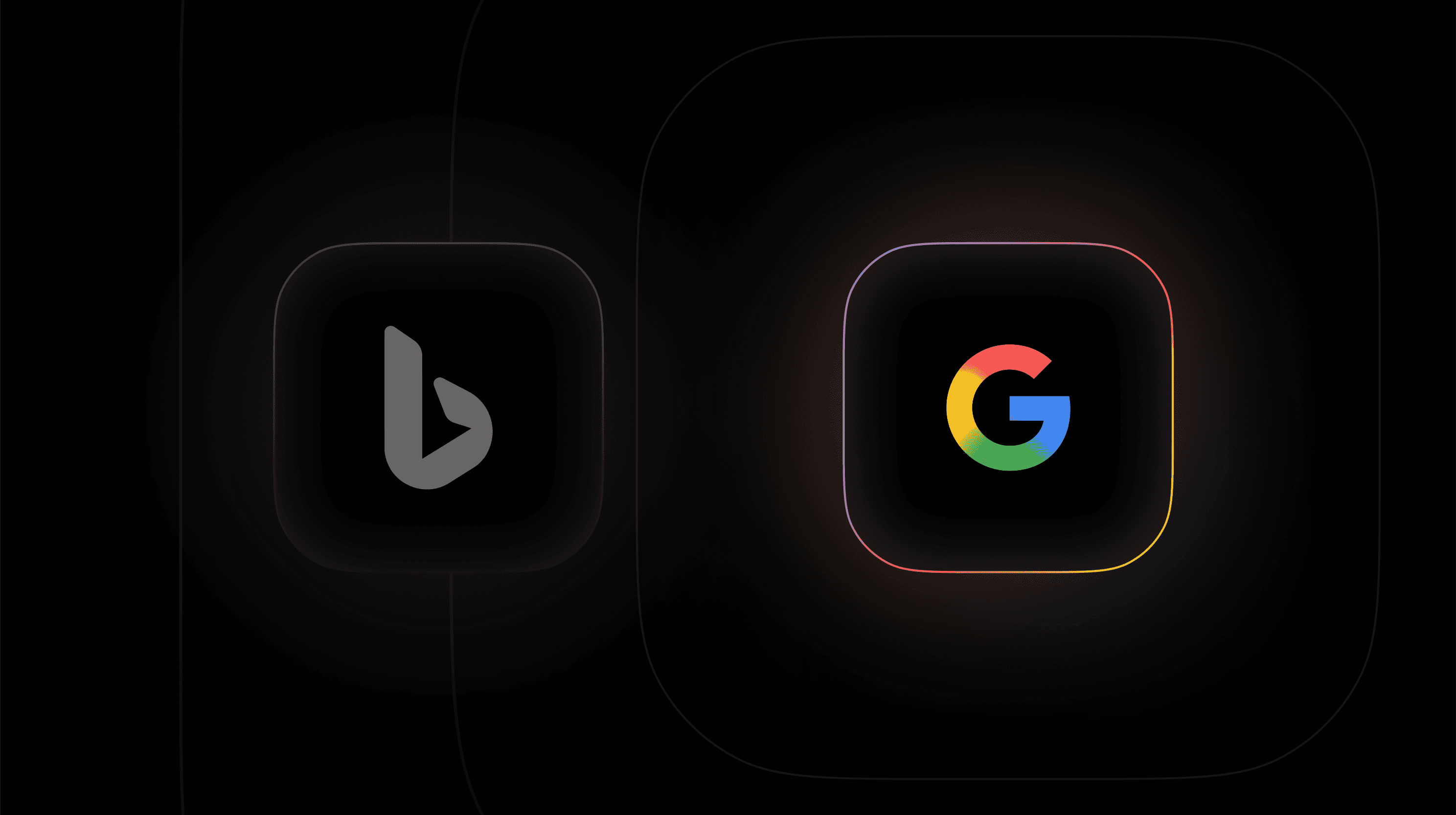Google is quietly powering ChatGPT
The AI search landscape shifted dramatically, though few noticed. While experts debated whether AI would displace Google, Google quietly positioned itself as a primary data source for ChatGPT 4o.
Our analysis reveals two key trends: ChatGPT 4o's apparent shift from Bing to Google's index, and emerging patterns between Google rankings and ChatGPT 4o citations.
ChatGPT 4o's Shift Toward Google
ChatGPT is leaving Bing behind fast. We analyzed a sample from our dataset of 240 million ChatGPT citations to see how its index is evolving, and the shift we found was huge. The data indicates a concerning trend for Microsoft: ChatGPT's alignment with Google SERP has increased significantly since April, while Bing alignment has declined substantially.
But even with this shift, only a small portion of ChatGPT's citations match Google search results. This suggests ChatGPT maintains largely independent source selection despite the apparent shift toward Google.
This represents a strategic shift away from Microsoft's Bing index, particularly notable given Microsoft's multibillion dollar investment in OpenAI.

Citation Patterns When They Do Overlap
To understand these overlaps better, we analyzed 1,000 prompts to measure specific patterns between ChatGPT and Google search results. In cases where ChatGPT citations do align with Google results, clear patterns emerge. The chart below shows the distribution of human click-through rates compared to ChatGPT citation frequency across Google's top 10 positions.
Top-ranked pages (position 1) receive 27.5% of human clicks and 10% of ChatGPT citations in the cases where there is citation alignment. Lower-ranked pages (position 10) see only 2.5% of human clicks but maintain 4% citation rates from ChatGPT in these cases.
This reveals a "citation flattening" effect: while humans heavily favor top search results, ChatGPT distributes citations more evenly across all top-10 positions.

This "citation flattening" effect means that being anywhere in Google's top 10 gives you a much better shot at AI citations than traditional click-through rates would suggest. While humans mostly ignore results below position 3, ChatGPT gives them serious consideration.
However, this pattern applies only to the minority of citations that match Google results exactly. The majority of ChatGPT's sources remain independent of Google's index.
What This Means for Your Strategy
The combination of these trends creates a paradox for anyone trying to optimize for AI visibility:
Google's index now plays a large role in what ChatGPT cites. However, citations still shuffle often, so traditional SEO check-ins fail when more than half of them change each month.
The old playbook of sporadic ranking checks and competitive analysis becomes meaningless when your "AI ranking neighbors" completely shuffle every month. You can't optimize for a target that's constantly moving. For more on this volatility, see our research on AI search volatility.
Success in this environment requires abandoning traditional search thinking entirely. Instead of chasing specific citation placements, you need systems built around:
- Continuous monitoring with daily or weekly sampling
- Statistical significance where only aggregated trends matter
- Platform-specific strategies since each AI platform has different volatility patterns
- Trend analysis where direction matters more than absolute position
The Bottom Line
Google is winning the AI revolution from the inside by becoming the preferred index for answer engines. In doing so, Google stays relevant even if traditional search declines.
But this victory comes with a crucial caveat: the probabilistic nature of AI means that citation consistency is impossible by design. Randomness prevents repetitive responses and adapts to changing information landscapes, but it also makes traditional optimization approaches obsolete.
The question isn't whether your content will appear consistently in AI responses. It's whether you'll build the monitoring and analysis capabilities to understand when, why, and how often it appears, and how that performance changes over time.
The companies that figure this out first will have a massive advantage in the AI-driven information economy. The rest will keep chasing ghosts in an increasingly volatile landscape.
Ready to put real numbers behind your AI visibility? Get a demo of Profound and see how we turn AI shifts into your competitive advantage.
